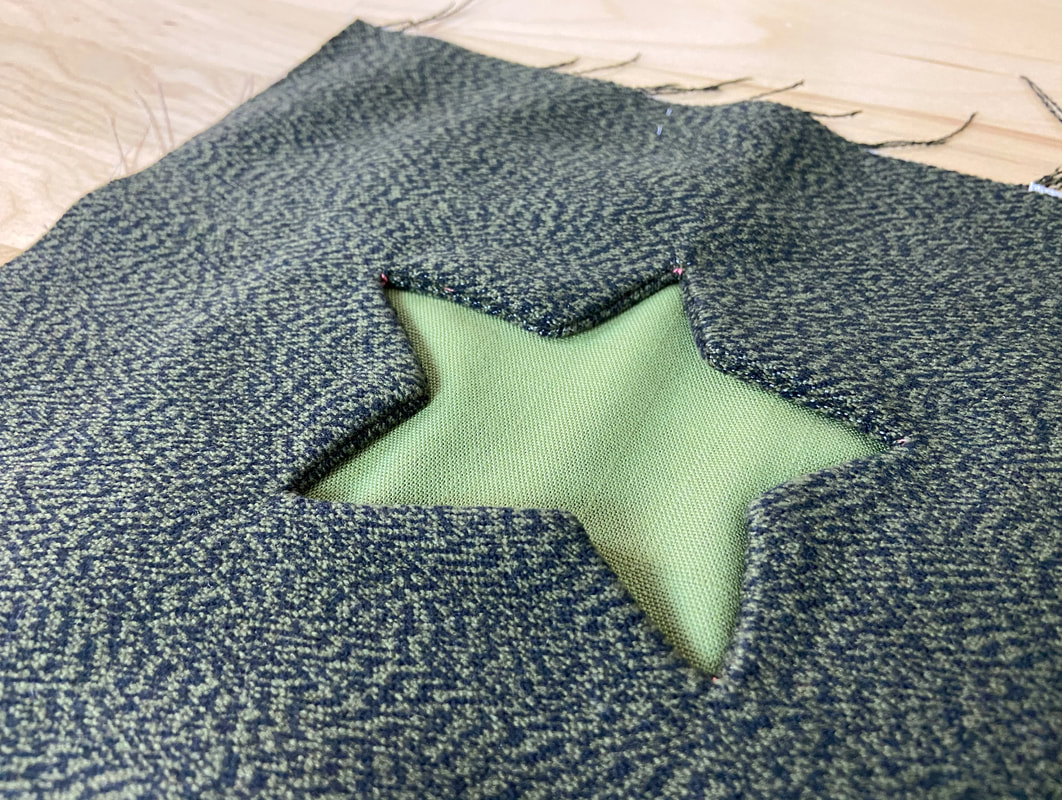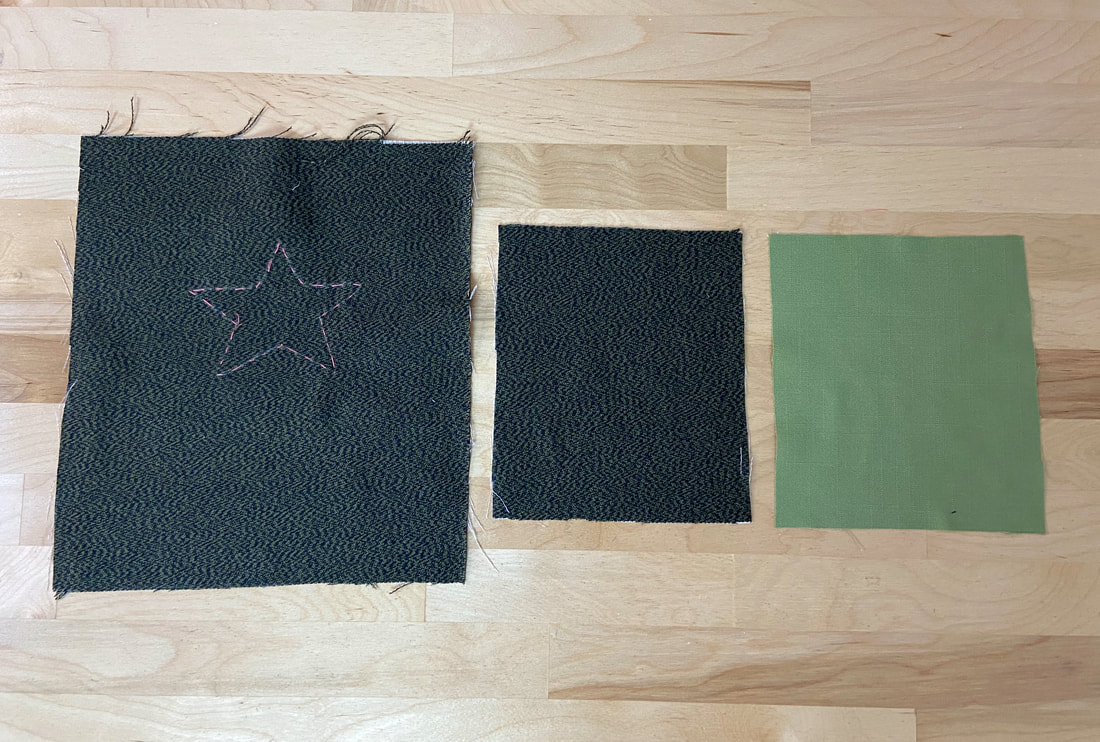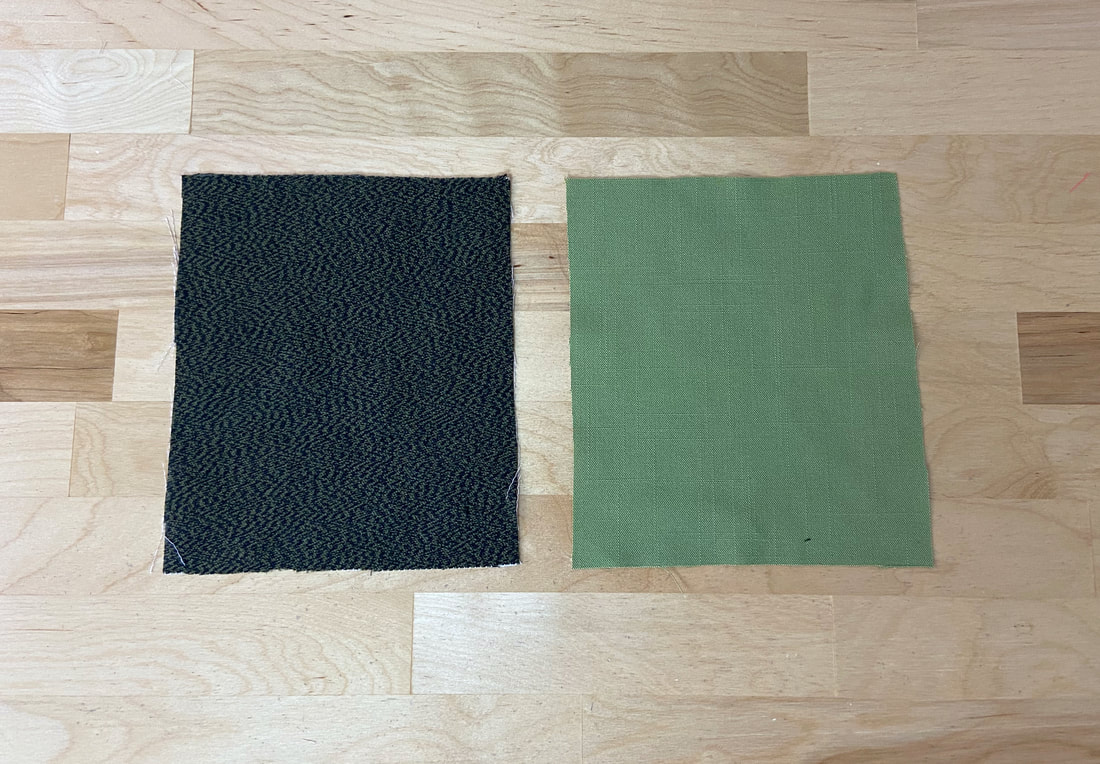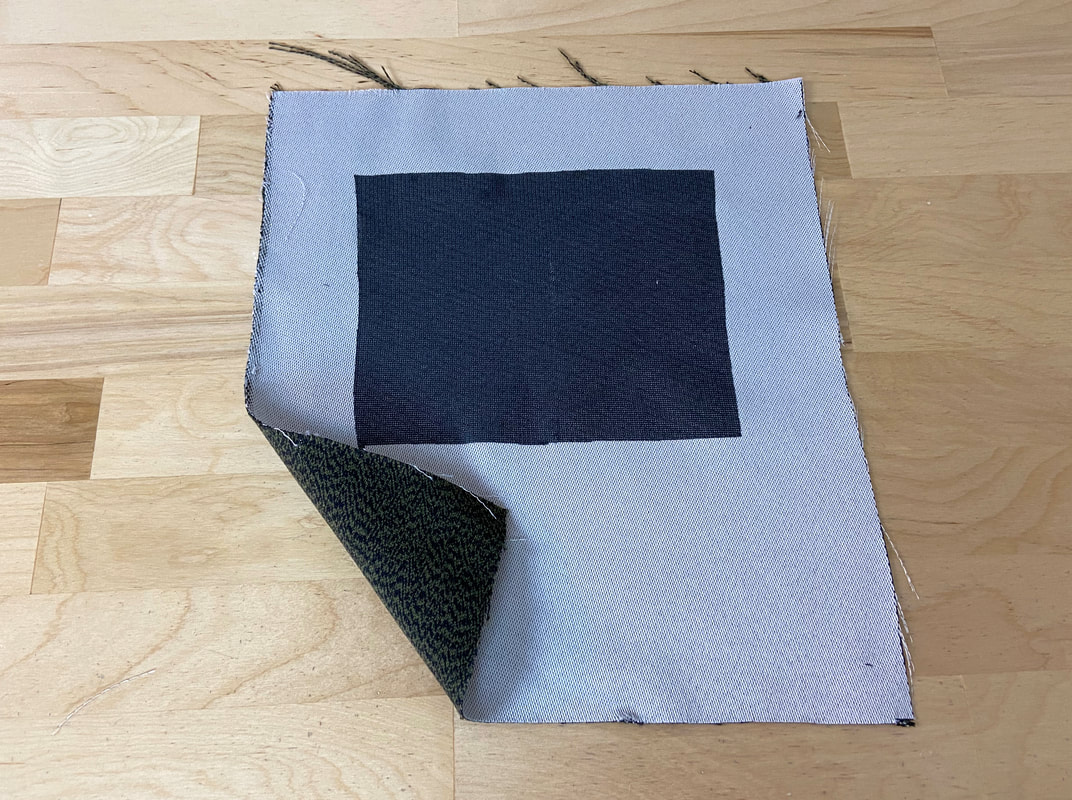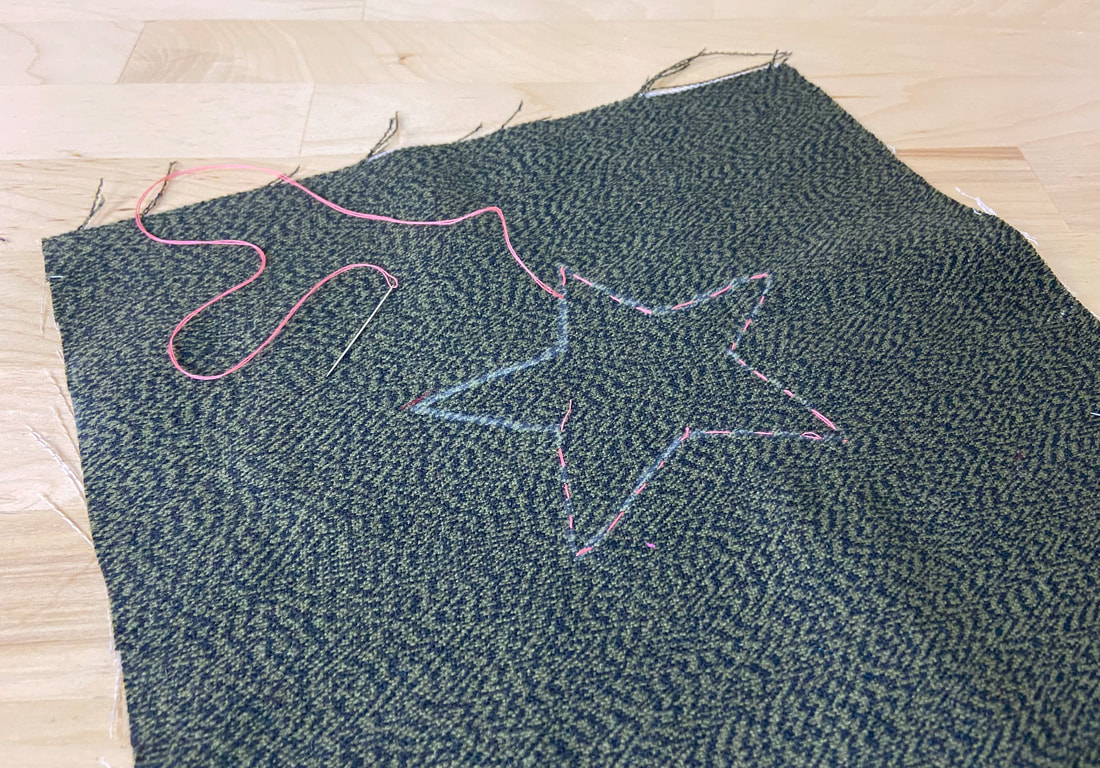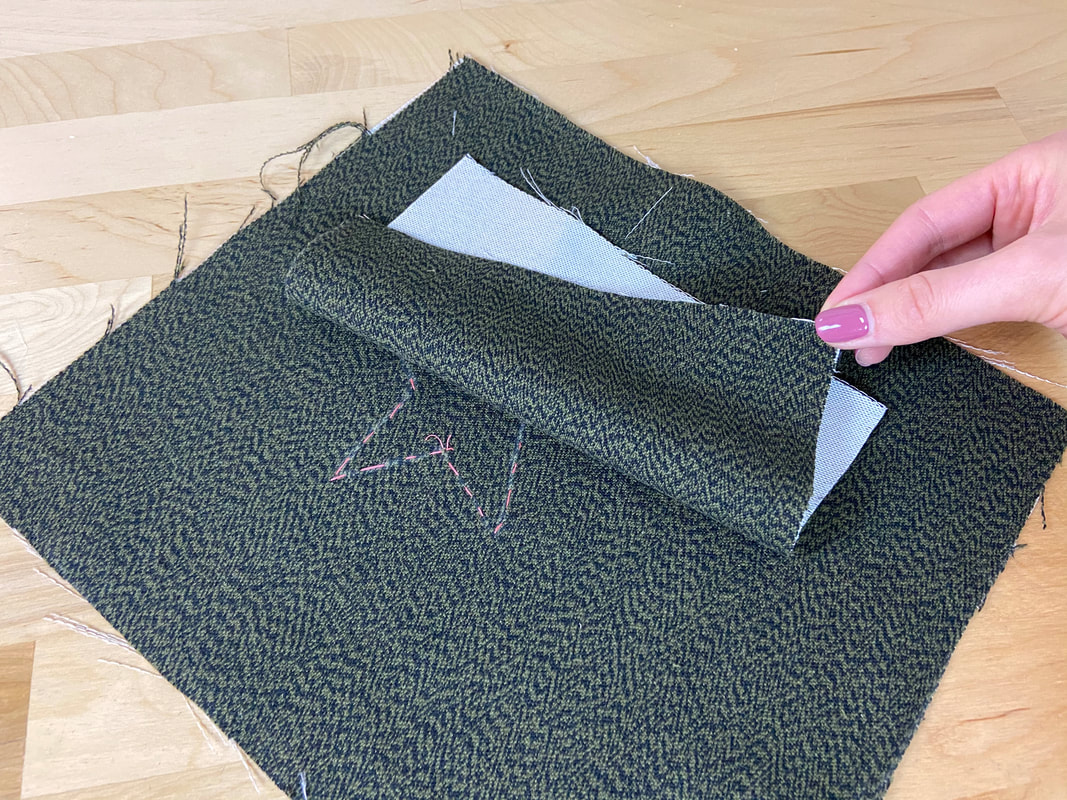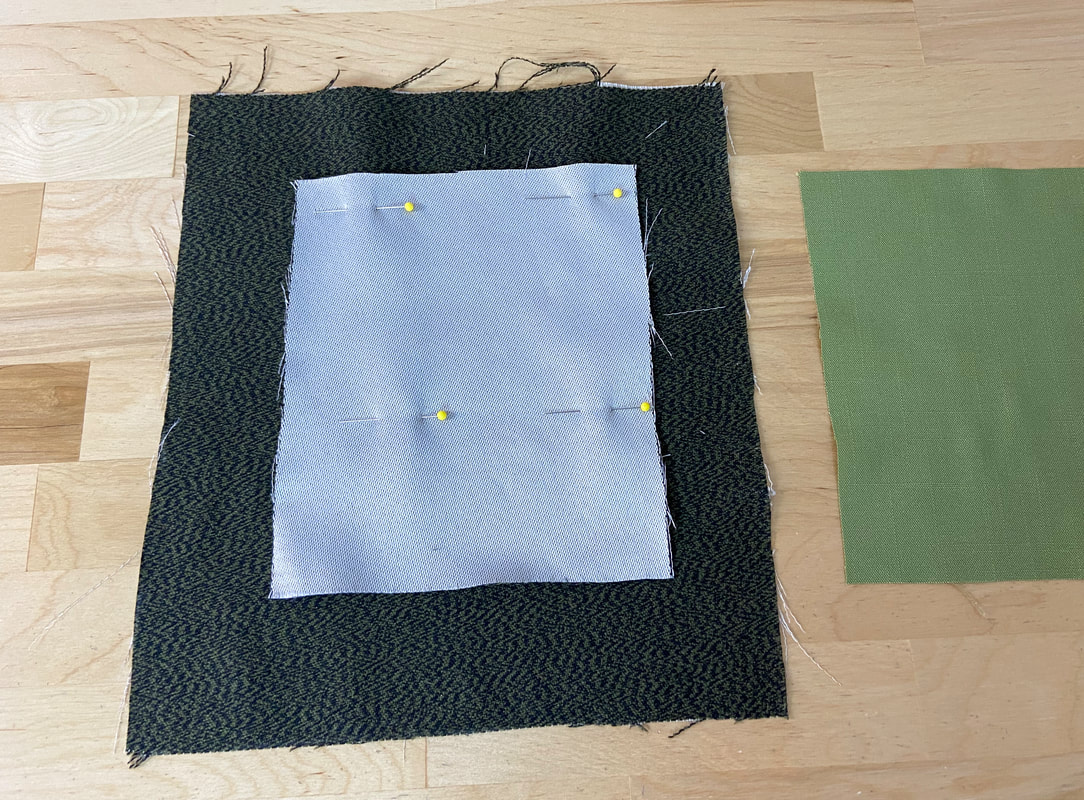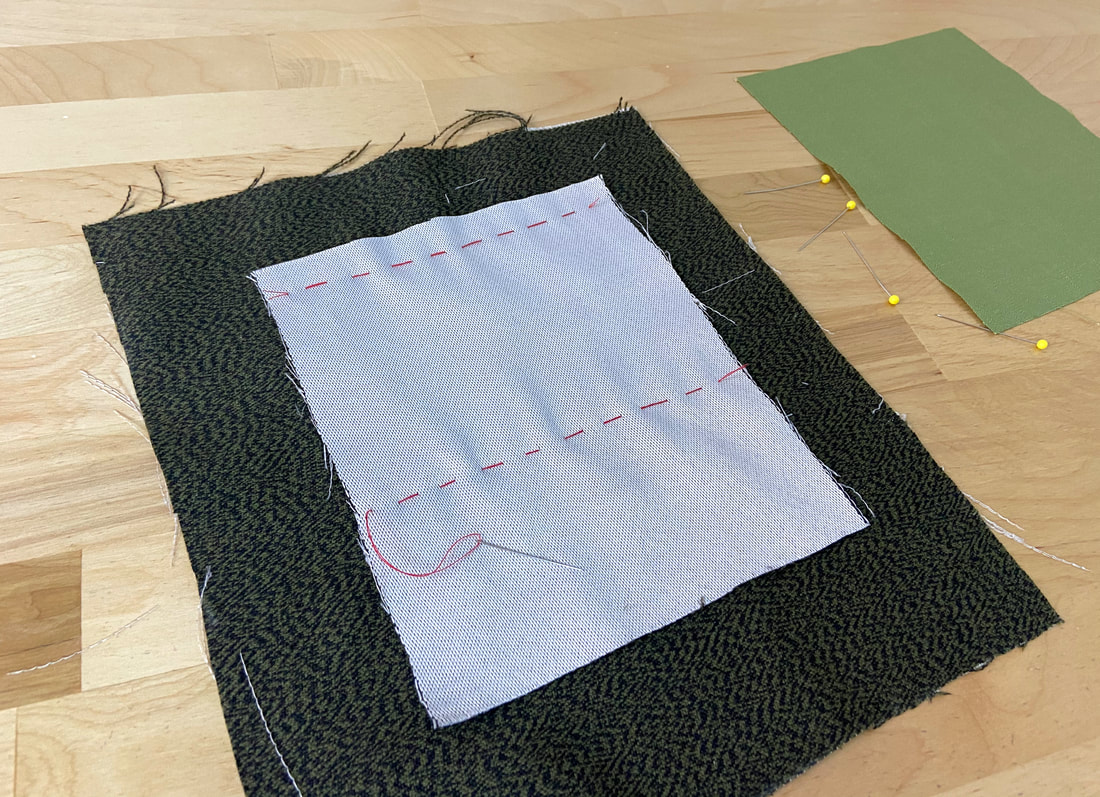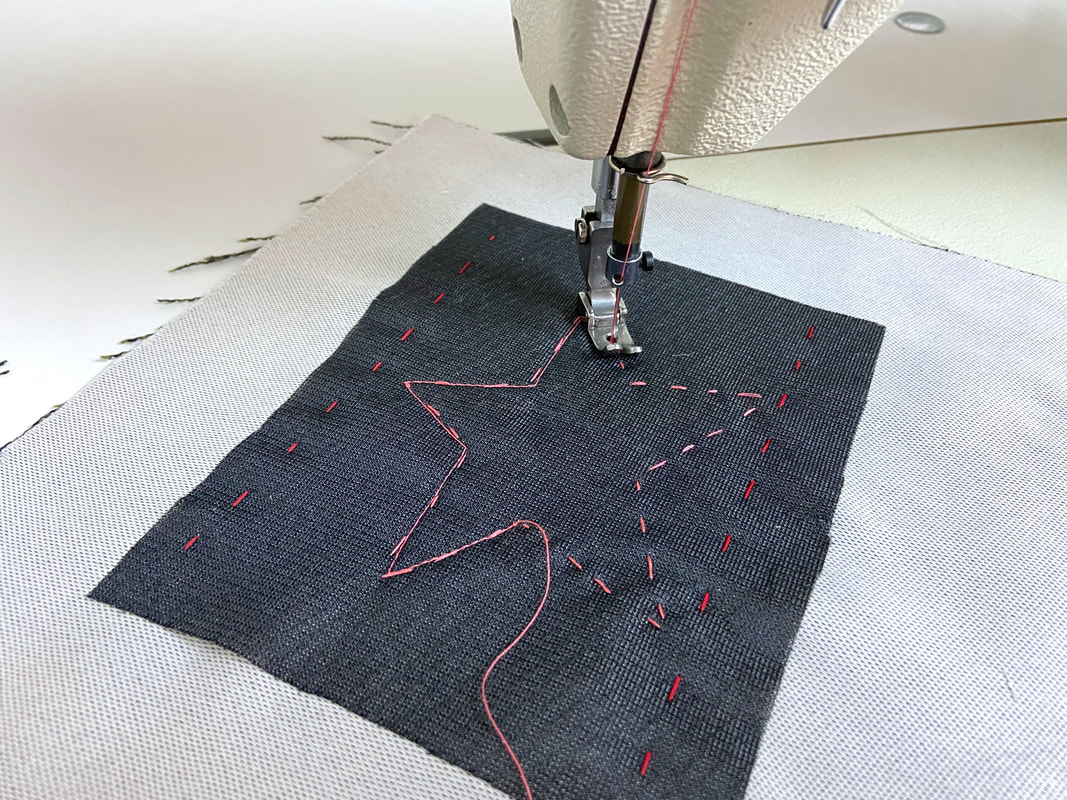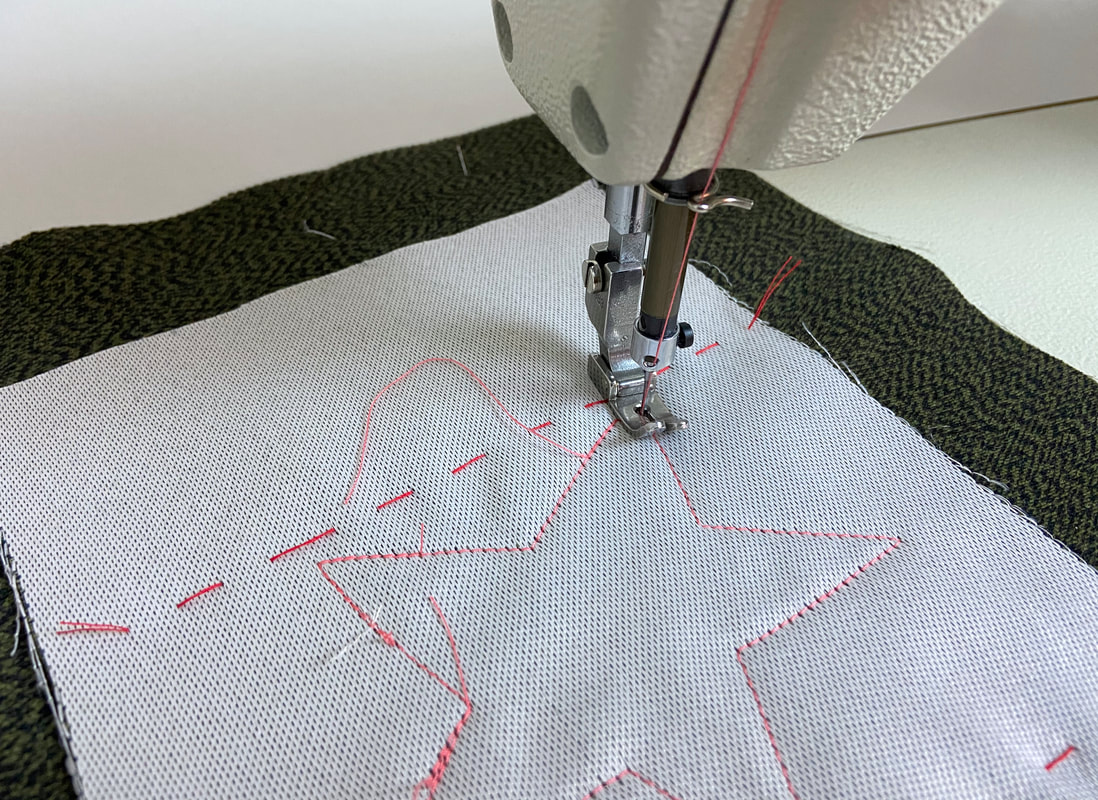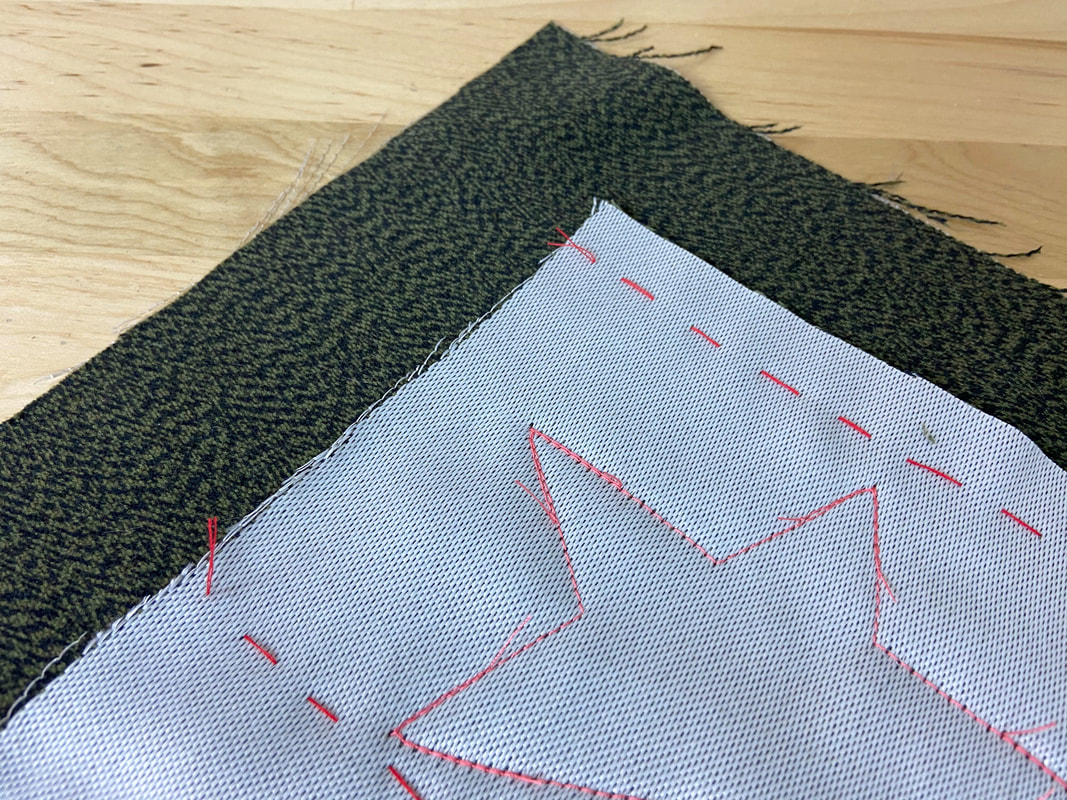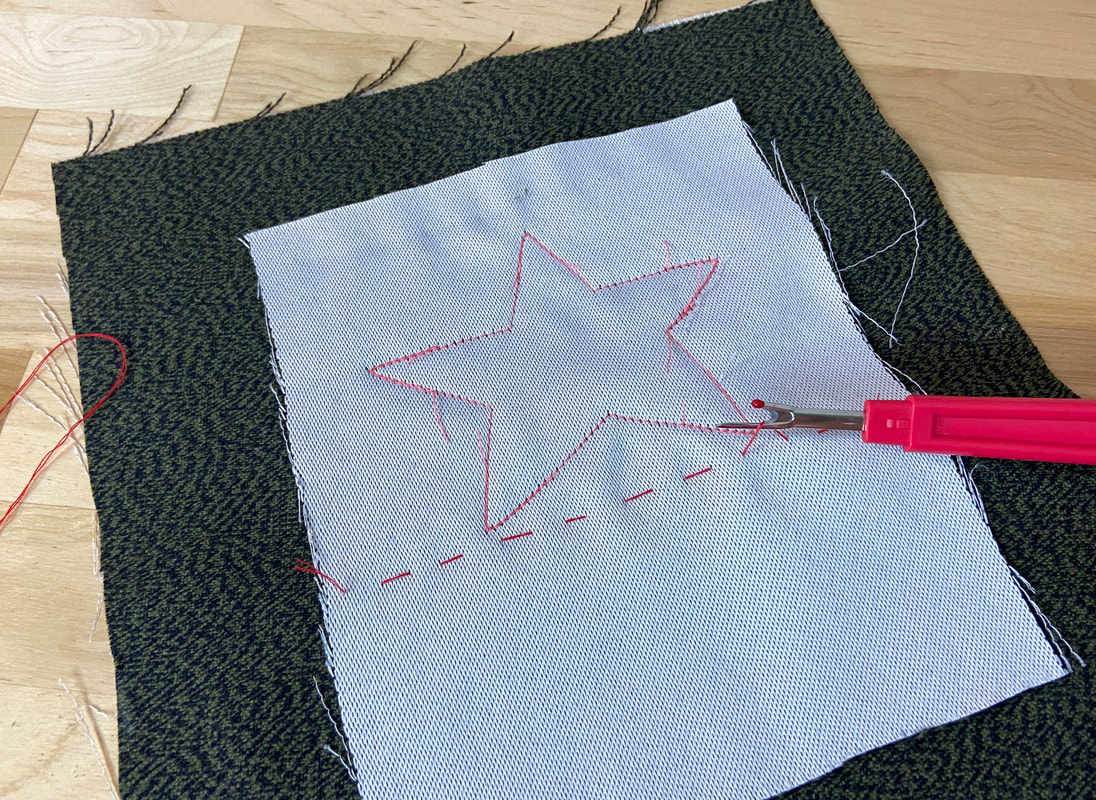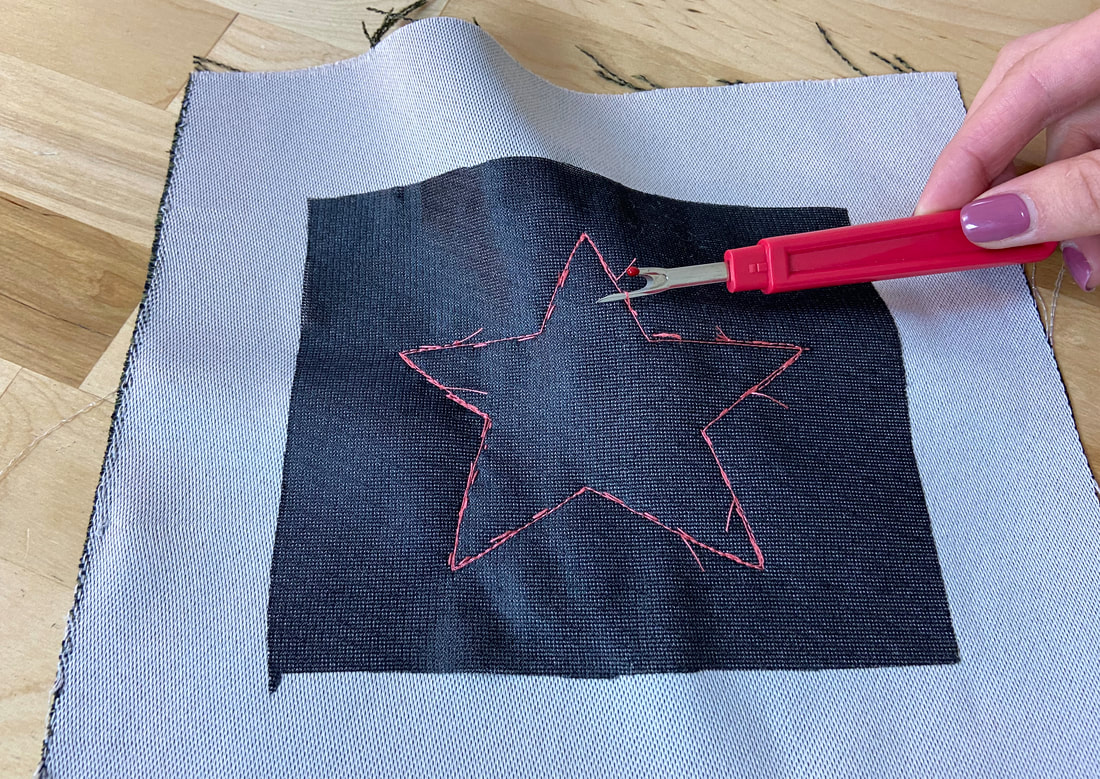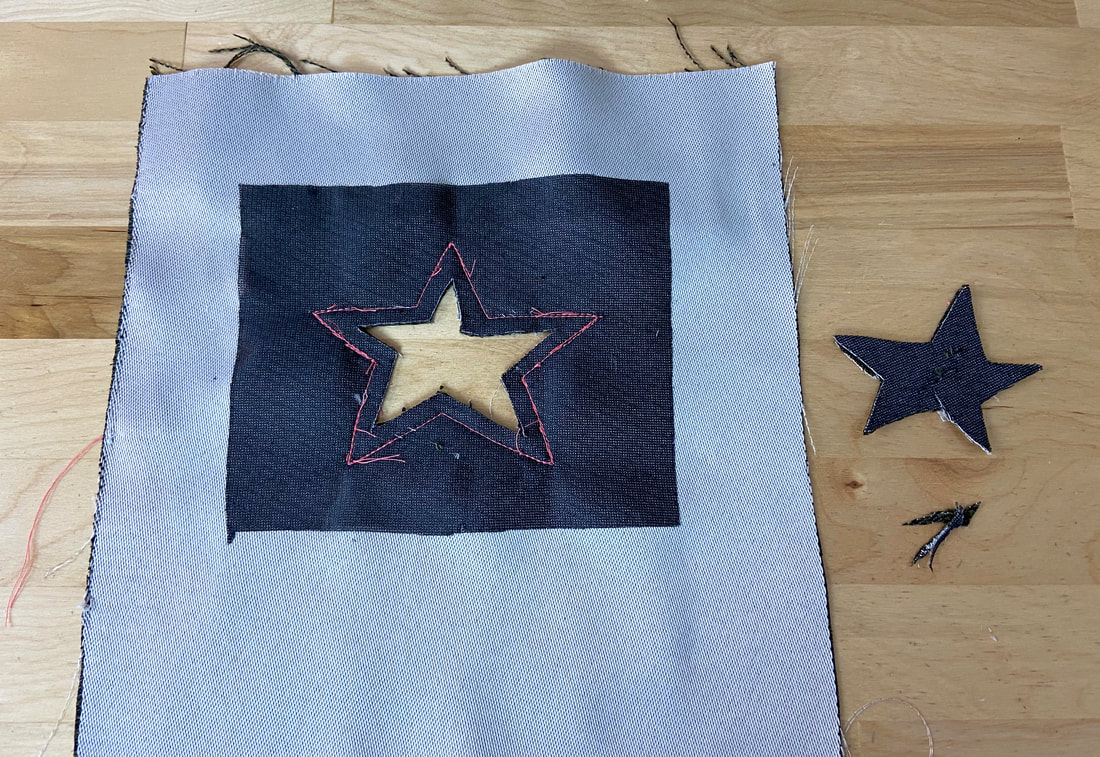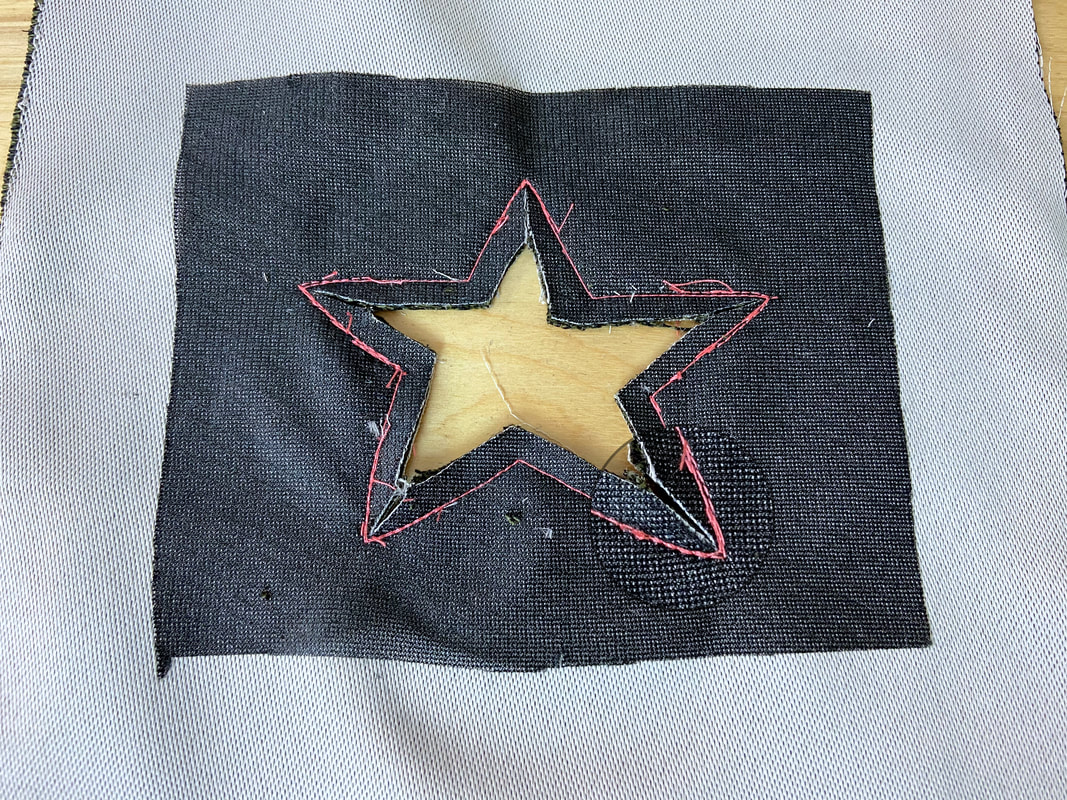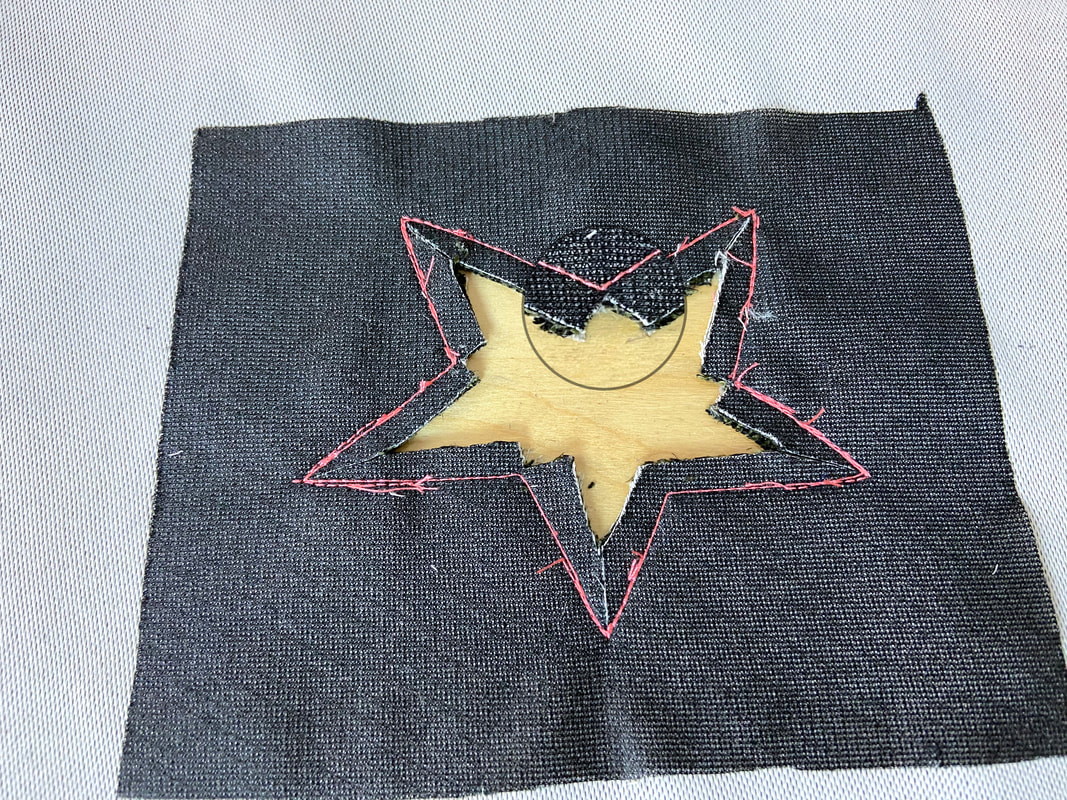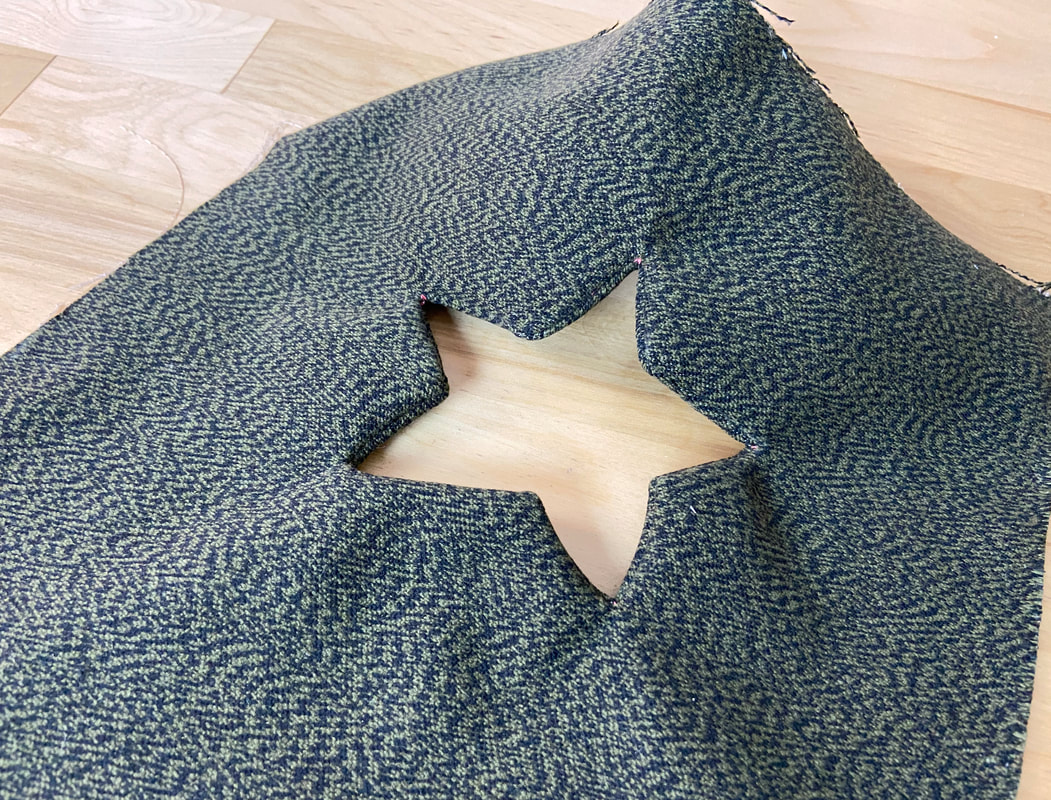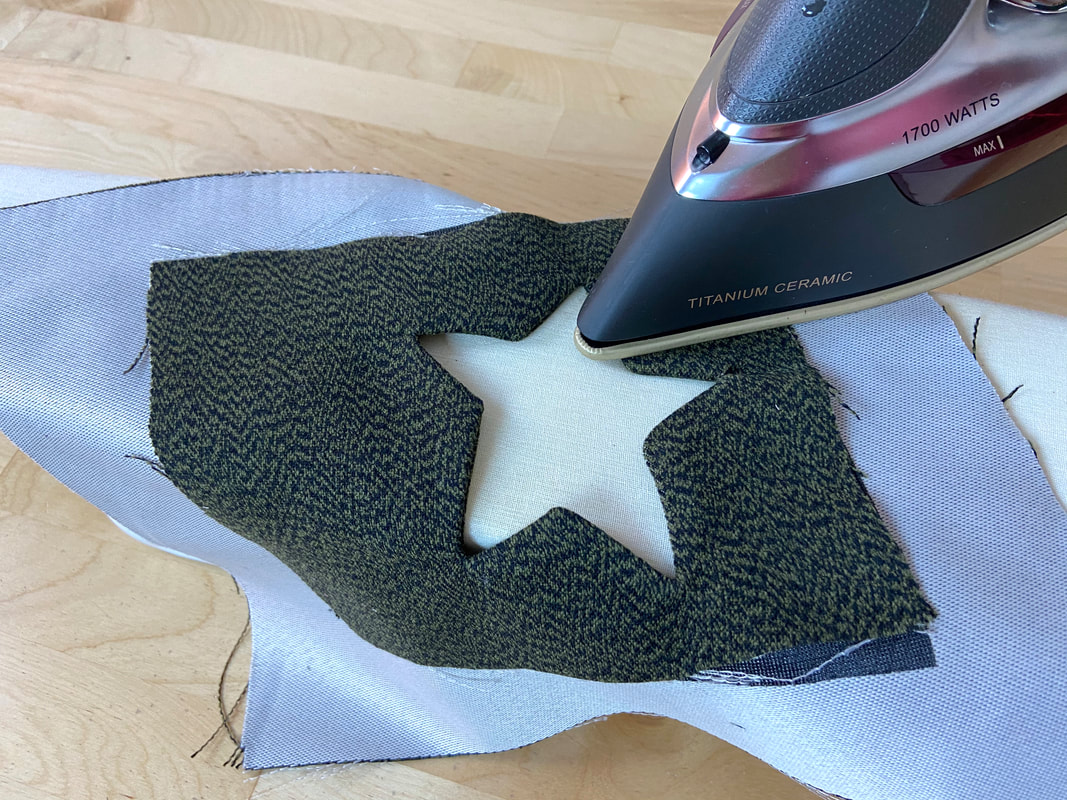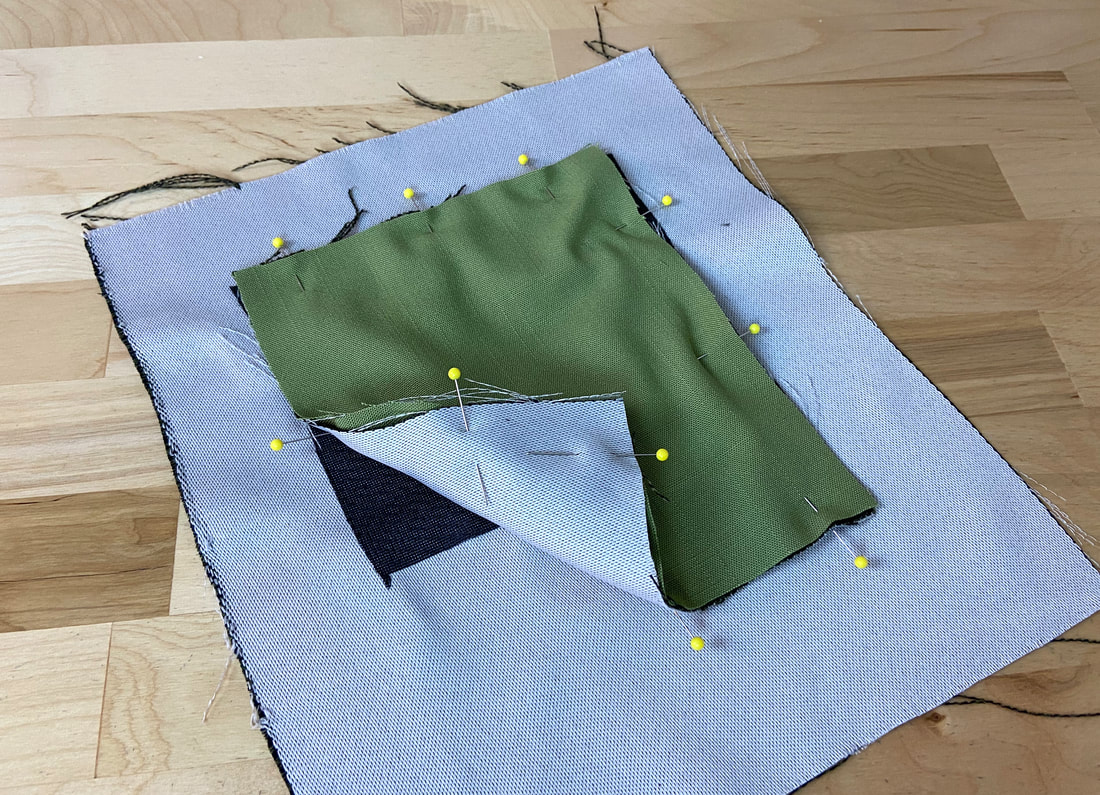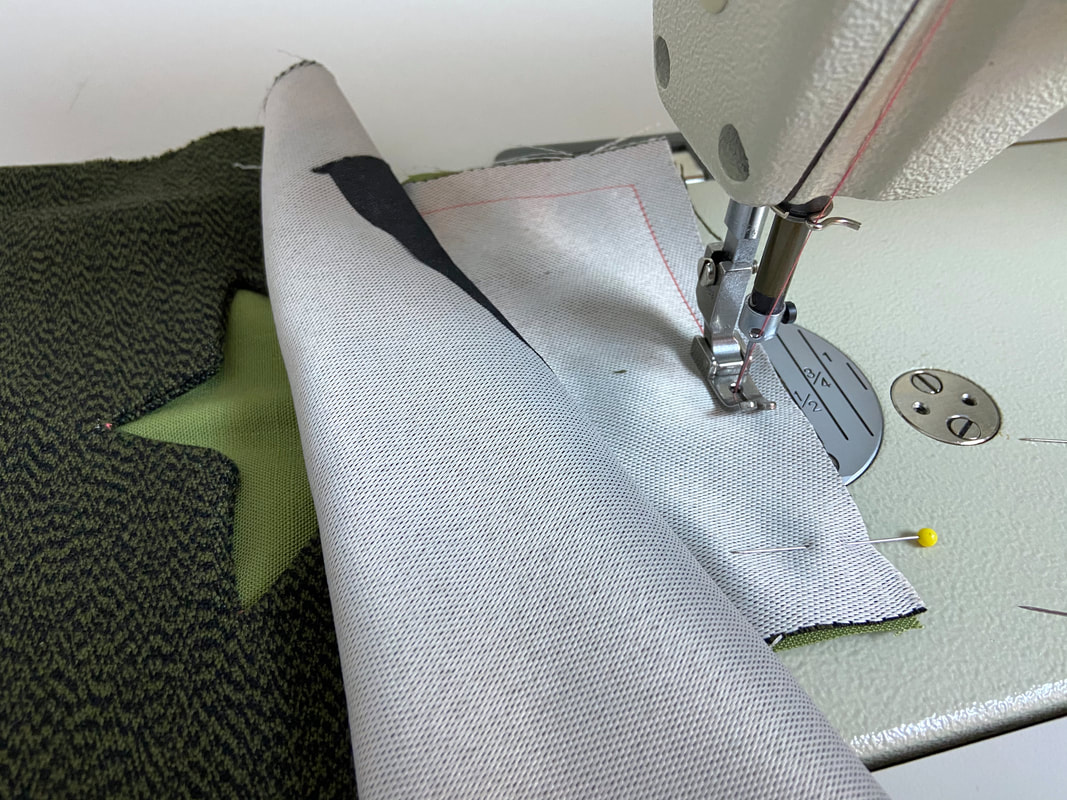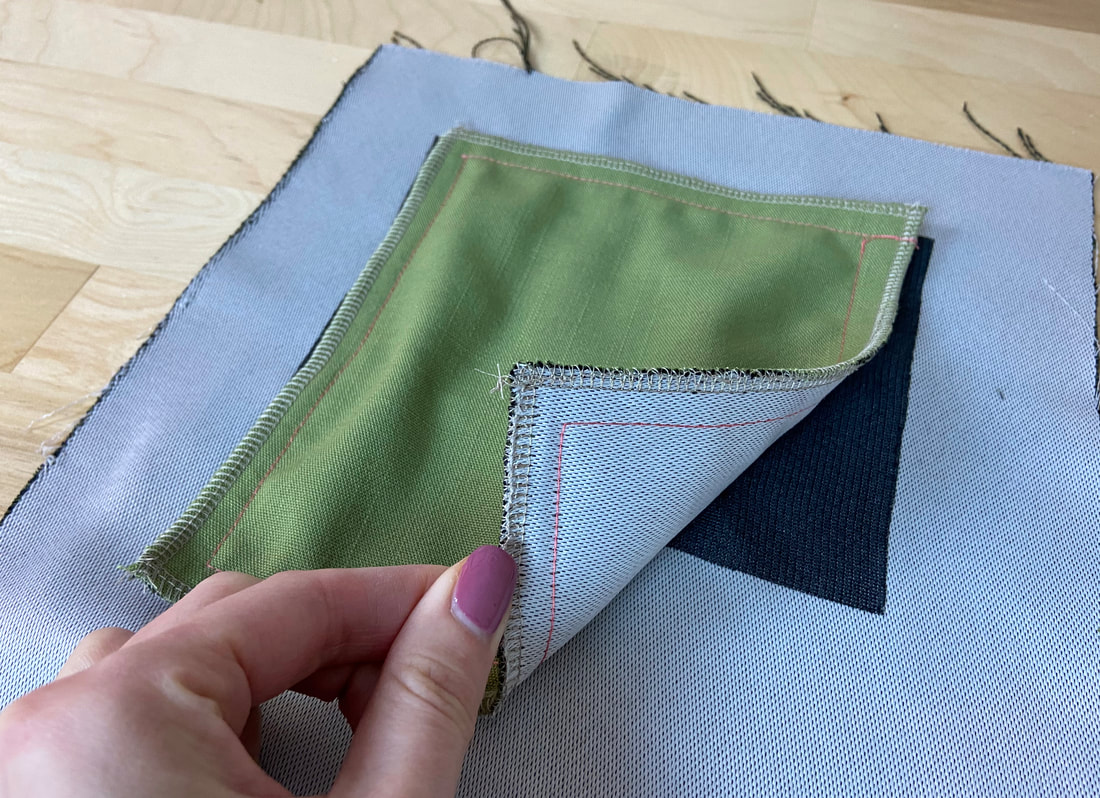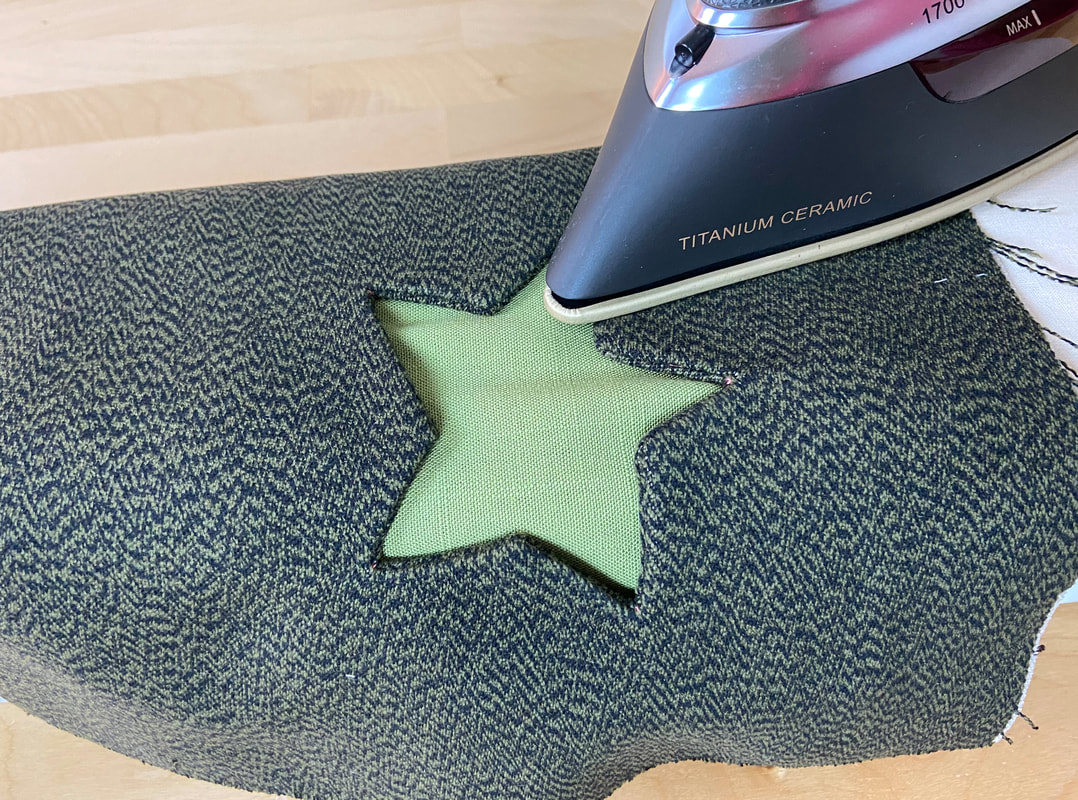The star pocket application below is the perfect example of how any unique shape can be turned into a functional slash pocket if the proper trimming and notching techniques are used.
Start by cutting two identical pocket pieces that extend 1” past the pocket opening on all sides. Since the star will occupy a large amount of space both in length and width, we need to account for its opening when calculating the final pocket piece measurements.
In this tutorial, the star expands at a 4” diameter. The pocket depth (which is the length of the pocket bag at the bottom of the star opening) is 6”. Thus, the total length of the pocket piece will be the 3” pocket depth plus the 4” pocket opening plus 1” of sewing excess at the top: 8” total.
The width of the star opening is also 4”. Add 2” to account for 1” excess on each side of the pocket opening for a total width of 5”.
The final pocket pieces will measure 8” in length by 5” in width.
1. Cut the two pocket pieces using the fabric of your choice. In this tutorial, the facing is cut from the same fabric as the garment while the pocket piece, which will be visible on the finished application, is cut from a contrast (green) fabric.
2. Add interfacing to the wrong side of the garment at the exact pocket location, expanding about 2” past all edges of the final pocket opening.
3. Using tailor’s chalk or a quilting pencil, draw (or trace) the shape of the star first. Next, hand baste the star shape using the chalk marks as a guide.
4. With the garment on its right side, center the pocket facing face down (fabric face sides touching) such that the top edge of the pocket piece extends 1” past the upper-most part of the star. The top and side pocket edges should extend 1” past the star ends as shown.
Insert pins and consider hand basting the layers together for extra stability.
5. Flip the pinned/basted layers to the wrong side, and following the hand basting, machine stitch next to the basted lines pivoting the stitch at each inner and outer corner of the star.
6. Once complete, apply another row of stitching along all inner and outer corners for extra reinforcement as shown.
Once stitched, remove all temporary hand basting stitches at this point.
7. Next, cut the inside of the star out such that there is only ¼” seam allowance along all star lines.
8. Next, clip the outer star corner with a simple slash to but-not-through the stitching.
9. At the inner corner, clip wedge-shaped notches as shown.
10. Flip the pocket layer to the wrong side of the garment to expose the finished star edges. Straighten and adjust them by hand to flatten the finished star shape.
11. Iron the finished star edges flat as shown. Check that each finished edge corresponds to a seamline. The star should be evenly shaped, smooth and lay flat with no puckering at any of its corners.
12. Align the second pocket piece on top of the stitched one with fabric face sides touching and all edges aligning. Insert pins perpendicular to the edges to keep the layers in place as shown.
13. Stitch all edges at ½” seam allowance to complete the pocket bag.
14. Apply a serging or zigzag stitch to finish the pocket edges.
Last but not least, give the pocket application one last press!

